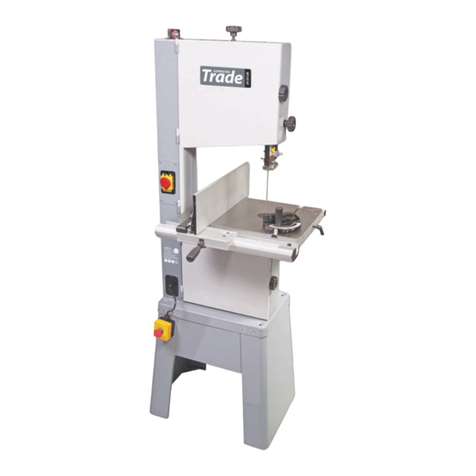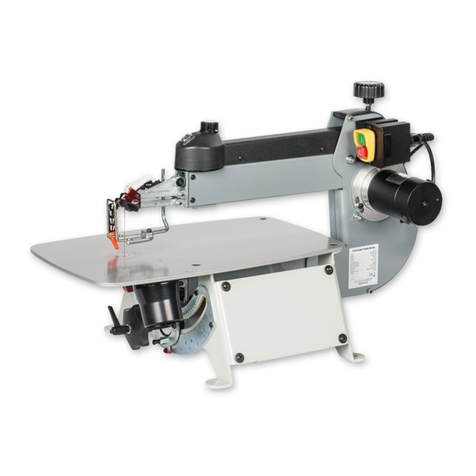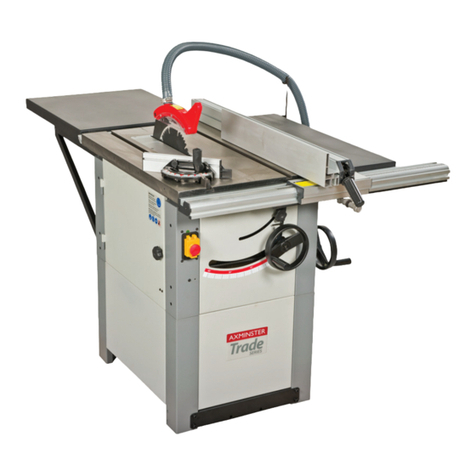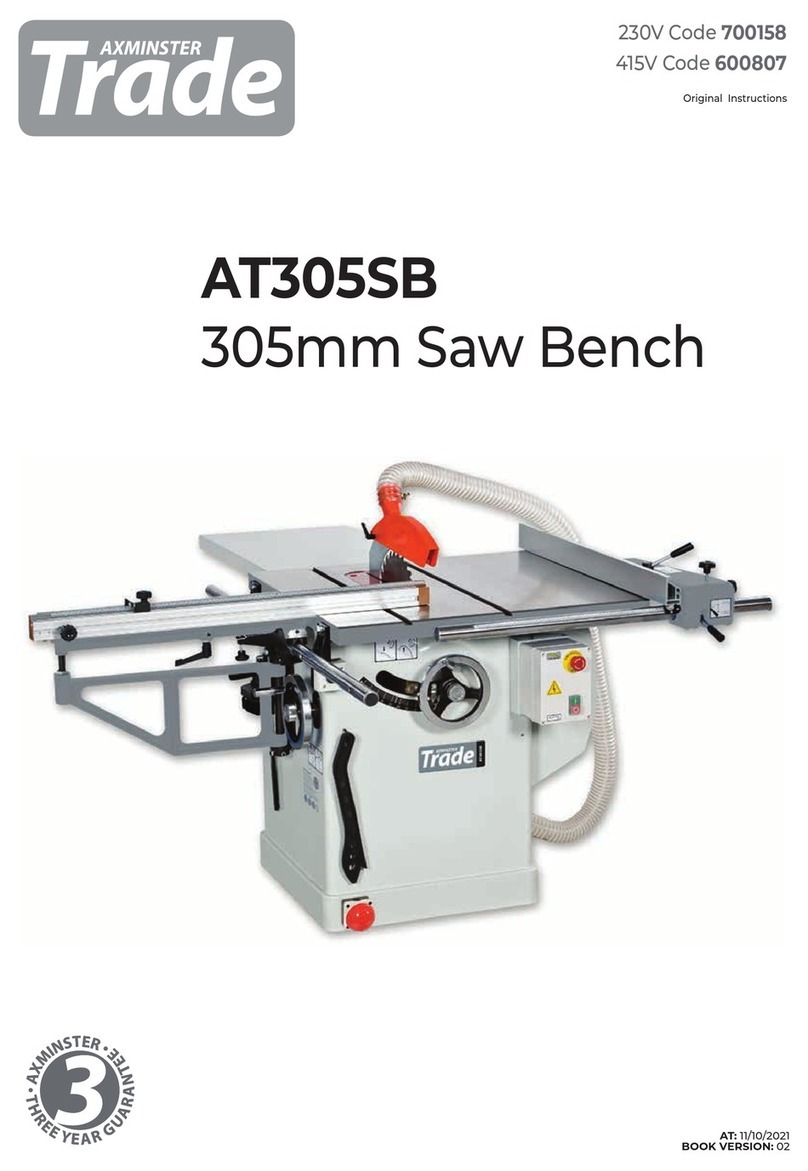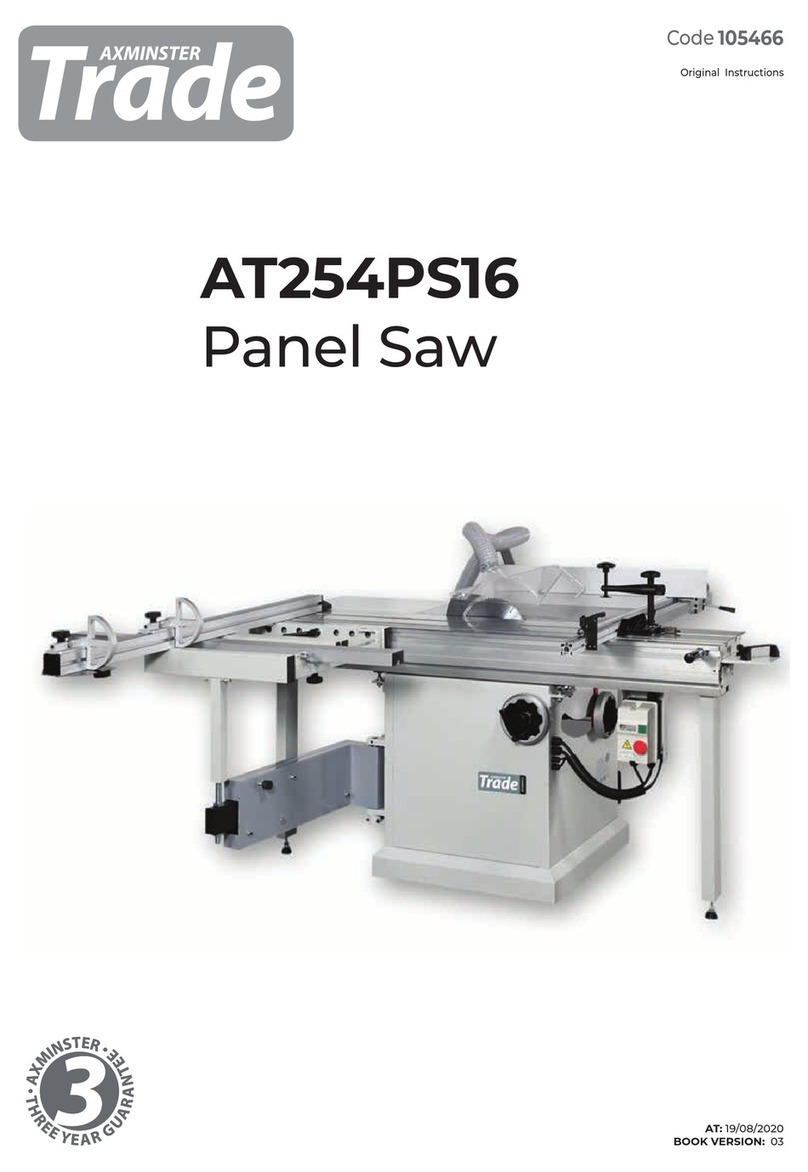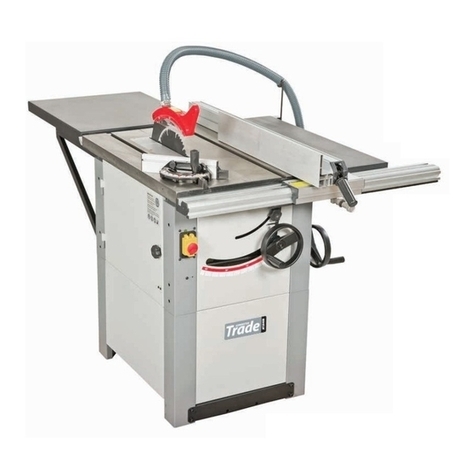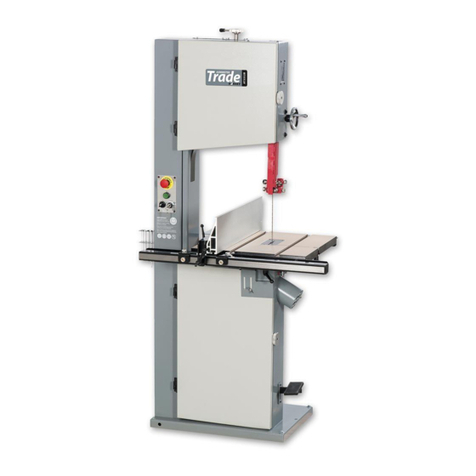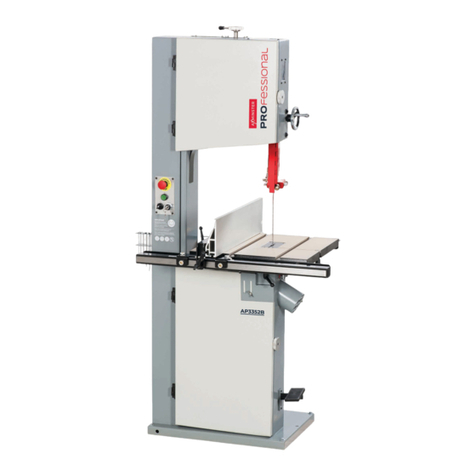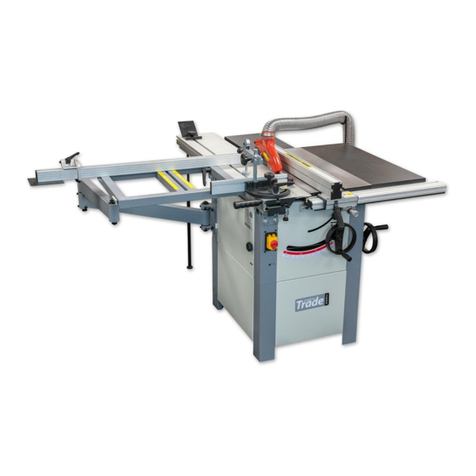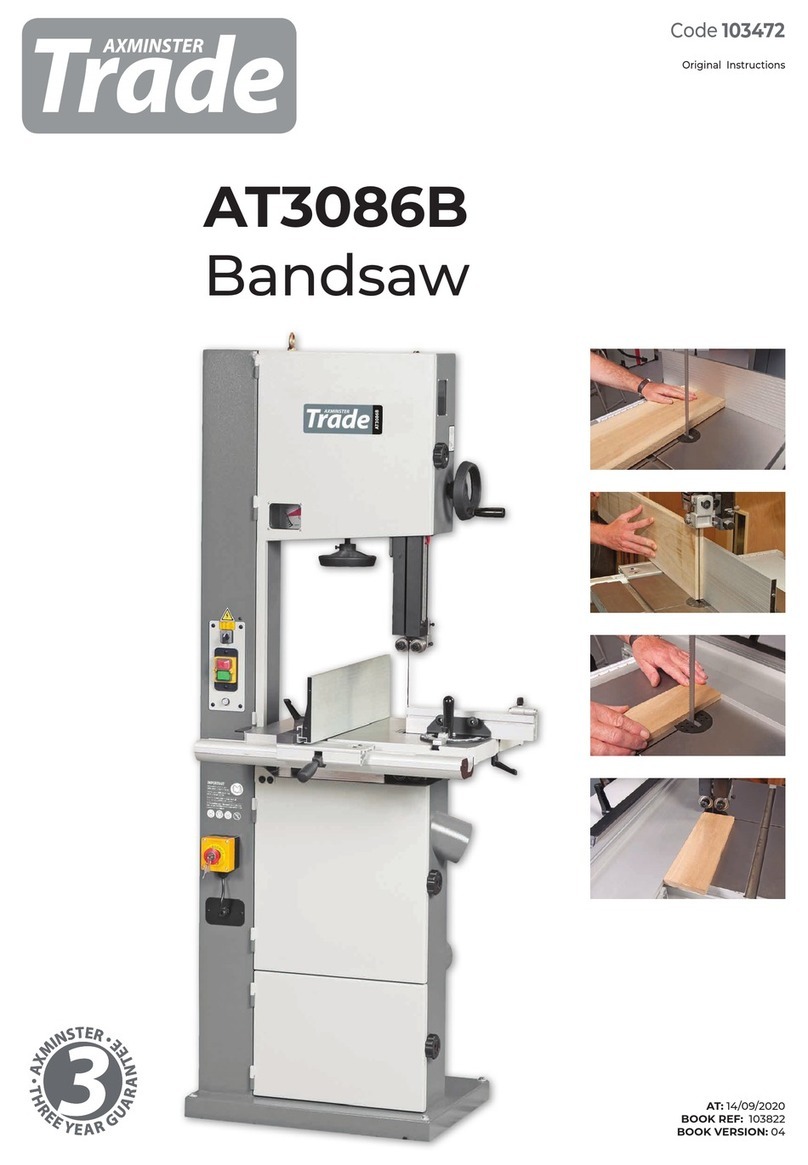
General Instructions for 230V Machines
7
Make sure the saw blade is the correct type for the job in
hand.
Do not force the saw, if the saw begins to ‘stall’ you are
‘forcing the cut’ or over working the saw. Ensure that
the saw blade is clean and sharp. Resin build up on
the blades will increase the friction of the saw passing
through the timber, and cause over heating of the blade,
blunt teeth will work harder tearing the fibre of the
timber as opposed to shearing it, also with subsequent
overheating. Both faults unnecessarily load the machine
beyond normal usage, and shorten its longevity.
Do not use blades that are damaged in any way.
Do not remove the blade guard.The design of the riving
knife on the machine will not allow for slotting or‘blind’
grooving, so there is no reason to remove the guard.
There is adequate clearance under the guard for the
capacity of the machine.
Do not use any blades that cut a smaller kerf than the
riving knife thickness. Make sure the riving knife is
correctly adjusted to the blade and is securely fastened.
If the table insert becomes damaged or broken, and will
not support the timber ‘up close’to the blade, replace it.
Specific Safety Precautions
Continues Over....
Do not start the saw with the workpiece touchinge the
blade.
FOR YOUR OWN SAFETY NEVER
OPERATE THE TABLE SAW WITHOUT
THE RIVING KNIFE IN PLACE!
Do not commence sawing until the blade has run up to
full speed. After switchinge off, never try to slow the saw
down more quickly by applying side pressure (with a
piece of wood?) to the blade. Apply the old joiner’s adage
of never getting hands within one handbreadth of the
blade. Leave the machine disconnected from the mains
supply until you are about to commence work.
Always disconnect the machine if you are leaving it
unattended.
Never leave the vicinity of the machine unless the blade
has come to a complete stop.
Do not attempt to carry out any maintenance, corrective
work, setting up etc., unless the machine is disconnected
from the mains supply. If any tools have been used
during setting up procedures, make sure they are
removed from the machine and stowed safely away.
The following will enable you to observe good working
practices, keep yourself and fellow workers safe and
maintain your tools and equipment in good working
order.
WARNING!! KEEP TOOLS AND EQUIPMENT
OUT OF REACH OF YOUNG CHILDREN
Mains Powered Tools
• Tools are supplied with an attached 16 Amp plug.
• Inspect the cable and plug to ensuree that neither are
damaged. Repair if necessary by a suitably qualified person.
• Do not use when or where it is liable to get wet.
Workplace
• Do not use 230V a.c. powered tools anywhere within
a site area that is flooded.
• Keep machine clean.
• Leave machine unplugged until work is about to
commence.
• Always disconnect by pulling on the plug body and not
the cable.
•Carry out a final check e.g. check the cutting tool
is securely tightened in the machine and the correct
speed and function set.
•Ensure you are comfortable before you start work,
balanced, not reaching etc.
•Wear appropriate safety clothing, goggles, gloves,
masks etc.Wear ear defenders at all times.
•If you have long hair wear a hair net or helmet to
prevent it being caught up in the rotating parts of the
machine.
•Consideration should be given to the removal of rings
and wristwatches.
•Consideration should also be given to non-slip footwear
etc.
•If another person is to use the machine, ensure they are
suitably qualified to use it.
•Do not use the machine if you are tired or distracted
•Do not use this machine within the designated safety
areas of flammable liquid stores or in areas where there
may be volatile gases.
•Check cutters are correct type and size, are undamaged
and are kept clean and sharp, this will maintain their
operating performance and lessen the loading on the
machine.
•OBSERVE…. make sure you know what is happening
around you and USE YOUR COMMON SENSE.
KEEP WORK AREA AS UNCLUTTERED AS IS
PRACTICAL. UNDER NO CIRCUMSTANCES SHOULD
CHILDREN BE ALLOWED IN WORK AREAS.
